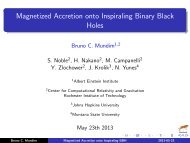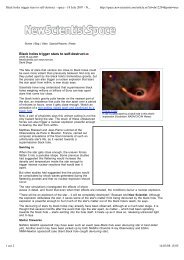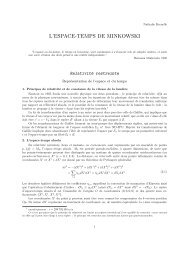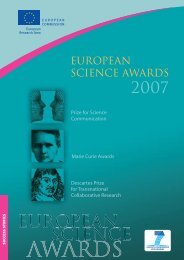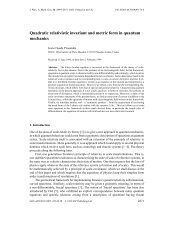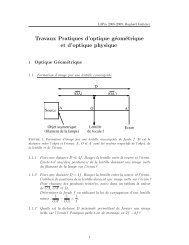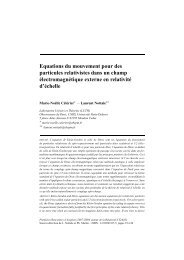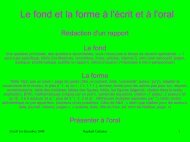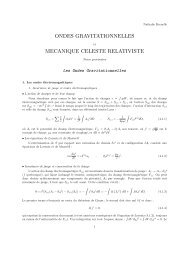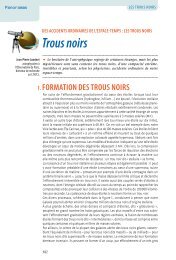Equation of state for compact stars Lecture 1 - LUTh
Equation of state for compact stars Lecture 1 - LUTh
Equation of state for compact stars Lecture 1 - LUTh
Create successful ePaper yourself
Turn your PDF publications into a flip-book with our unique Google optimized e-Paper software.
Ions - continued<br />
The gaseous regime <strong>of</strong> an OCP occurs <strong>for</strong> Γ ≪ 1, or T ≫ Tl, where<br />
Tl = Z2 e 2<br />
aikB<br />
≈ 2.275 × 10 7 Z 2 ρ6<br />
A ′<br />
1/3 K. (13)<br />
Important feature: For a plasma <strong>of</strong> light elements (H, He,C) one has Tl < TF,<br />
whereas <strong>for</strong> heavy elements (Fe, Ni, etc.) Tl TF.<br />
The ion-sphere radius ai, defined by Eq. (12), is the main ingredient <strong>of</strong> the<br />
ion-sphere model <strong>for</strong> strongly coupled Coulomb systems (T Tl) with nearly<br />
uni<strong>for</strong>m electron background. In this model the matter is considered as an<br />
ensemble <strong>of</strong> ion spheres filled by the uni<strong>for</strong>m electron background. It is supposed<br />
that any ion sphere contains an ion in its center. The radius ai is chosen in such a<br />
way that electron charge within the sphere compensates the ion charge. Then the<br />
spheres are electrically neutral and can be treated as non-interacting between<br />
themselves.<br />
Pawe̷l Haensel (CAMK) EOS <strong>for</strong> <strong>compact</strong> <strong>stars</strong> <strong>Lecture</strong> 1, IHP Paris, France 12 / 54



